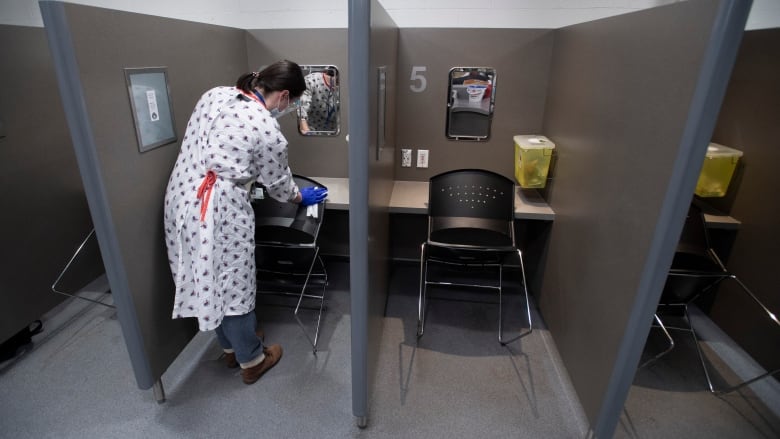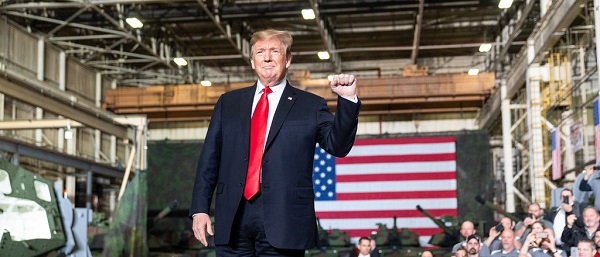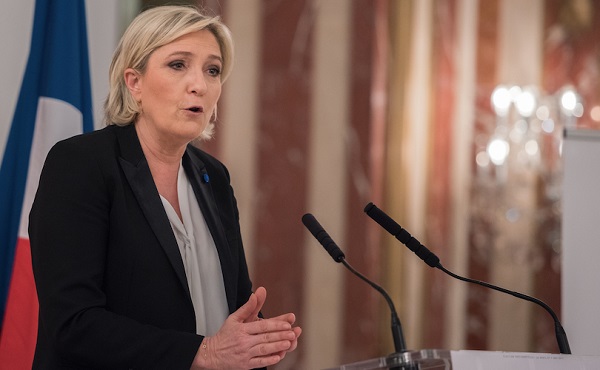Alberta
Over 800 overdose deaths in 2021 – Alberta RCMP recognize International Overdose Awareness Day

News release from Alberta RCMP
Alberta RCMP recognizes International Overdose Awareness Day 2022
In 2021, Alberta lost over 800 lives to meth-related accidental overdoses – a 28% increase from such tragic fatalities in 2020. On Aug. 31, 2022, the Alberta RCMP recognizes International Overdose Awareness Day by launching a methamphetamine awareness campaign in collaboration with the Canadian Integrated Response to Organized Crime. The campaign will help educate, protect and inform the public about negative impacts of methamphetamine and other synthetic drugs – as well as highlight the Alberta Clandestine Lab Enforcement and Response (CLEAR) Team and their role as a liaison with the chemical industry.
Methamphetamine is pervasive in our communities and has contributed to property crimes and crimes of violence. The Criminal Intelligence Service Canada identified methamphetamine as having one of the highest threat levels “due to its geographical reach, high burden of harm, and increased involvement of organized crime groups.” According to a 2017 Canadian Tobacco, Alcohol, and Drugs Survey, 3.7% of Canadians have used methamphetamine at least once in their lifetime. While methamphetamine use among the general population in Canada may be low, the Canadian Centre on Substance Use and Addiction notes that “there has been a dramatic increase in the availability and harms associated with methamphetamine in Canada” since 2013 – with notable trends in Western regions.
The Alberta CLEAR Team provides specialized operational support in identifying, assessing, processing and dismantling illegal synthetic drug production labs, processing locations, dump sites and Butane Hash Oil labs. Often, the CLEAR Team is called upon to liaise with the chemical industry in Alberta to ‘back track’ chemical precursors and facilitate the real time exchange of information regarding methods of diversion and indicators of suspicious transactions.
In the coming months, Alberta RCMP will share information at @AlbertaRCMP on Twitter and the @RCMPinAlberta Facebook page. To keep updated, follow #MethHurtsCommunities.
Quick Facts
Table 1: Alberta Substance Use Surveillance System
| Provincial Statistic | 2020 | 2021 |
| Meth-related accidental overdoses | 655 | 836 |
| Emergency Department visits related to substance use | 10,846 | 10,401 |
| Naloxone kits given out (community site and pharmacy kits) | 100,257 | 154,171 |
| Self reported reversals | 8,554 | 15,623 |
| Total number of EMS responses to opioid related event | 5,245 | 8,253 |
| Weekly average of EMS responses to opioid related event | 98.96 | 158.71 |
Source: https://www.alberta.ca/substance-use-surveillance-data.aspx
Table 2: Drug Analysis Services
| Provincial Statistic | 2020 | 2021 |
| Total number of stimulants identified during analysis per year | 7,285 | 7072 |
| Number of methamphetamine samples | 4,236 | 4,095 |
Table 3: Alberta RCMP Methamphetamine Offences
| Offence Type | 2020 | 2021 |
| Possession | 1,747 | 1,190 |
| Trafficking | 339 | 259 |
| Possession for the Purpose of Trafficking | 404 | 373 |
| Importing/Exporting | 2 | 0 |
| Possession for the Purpose of Exporting | 1 | 0 |
| Production | 18 | 5 |
| Possess/Produce/Sell/Import Anything Used to Produce/Traffic | 6 | 4 |
| Grand Total | 2,517 | 1,831 |
Source: RCMP Police Reporting and Occurrence System
Alberta
Big win for Alberta and Canada: Statement from Premier Smith

Premier Danielle Smith issued the following statement on the April 2, 2025 U.S. tariff announcement:
“Today was an important win for Canada and Alberta, as it appears the United States has decided to uphold the majority of the free trade agreement (CUSMA) between our two nations. It also appears this will continue to be the case until after the Canadian federal election has concluded and the newly elected Canadian government is able to renegotiate CUSMA with the U.S. administration.
“This is precisely what I have been advocating for from the U.S. administration for months.
“It means that the majority of goods sold into the United States from Canada will have no tariffs applied to them, including zero per cent tariffs on energy, minerals, agricultural products, uranium, seafood, potash and host of other Canadian goods.
“There is still work to be done, of course. Unfortunately, tariffs previously announced by the United States on Canadian automobiles, steel and aluminum have not been removed. The efforts of premiers and the federal government should therefore shift towards removing or significantly reducing these remaining tariffs as we go forward and ensuring affected workers across Canada are generously supported until the situation is resolved.
“I again call on all involved in our national advocacy efforts to focus on diplomacy and persuasion while avoiding unnecessary escalation. Clearly, this strategy has been the most effective to this point.
“As it appears the worst of this tariff dispute is behind us (though there is still work to be done), it is my sincere hope that we, as Canadians, can abandon the disastrous policies that have made Canada vulnerable to and overly dependent on the United States, fast-track national resource corridors, get out of the way of provincial resource development and turn our country into an independent economic juggernaut and energy superpower.”
Alberta
Energy sector will fuel Alberta economy and Canada’s exports for many years to come

From the Fraser Institute
By any measure, Alberta is an energy powerhouse—within Canada, but also on a global scale. In 2023, it produced 85 per cent of Canada’s oil and three-fifths of the country’s natural gas. Most of Canada’s oil reserves are in Alberta, along with a majority of natural gas reserves. Alberta is the beating heart of the Canadian energy economy. And energy, in turn, accounts for one-quarter of Canada’s international exports.
Consider some key facts about the province’s energy landscape, as noted in the Alberta Energy Regulator’s (AER) 2023 annual report. Oil and natural gas production continued to rise (on a volume basis) in 2023, on the heels of steady increases over the preceding half decade. However, the dollar value of Alberta’s oil and gas production fell in 2023, as the surging prices recorded in 2022 following Russia’s invasion of Ukraine retreated. Capital spending in the province’s energy sector reached $30 billion in 2023, making it the leading driver of private-sector investment. And completion of the Trans Mountain pipeline expansion project has opened new offshore export avenues for Canada’s oil industry and should boost Alberta’s energy production and exports going forward.
In a world striving to address climate change, Alberta’s hydrocarbon-heavy energy sector faces challenges. At some point, the world may start to consume less oil and, later, less natural gas (in absolute terms). But such “peak” consumption hasn’t arrived yet, nor does it appear imminent. While the demand for certain refined petroleum products is trending down in some advanced economies, particularly in Europe, we should take a broader global perspective when assessing energy demand and supply trends.
Looking at the worldwide picture, Goldman Sachs’ 2024 global energy forecast predicts that “oil usage will increase through 2034” thanks to strong demand in emerging markets and growing production of petrochemicals that depend on oil as the principal feedstock. Global demand for natural gas (including LNG) will also continue to increase, particularly since natural gas is the least carbon-intensive fossil fuel and more of it is being traded in the form of liquefied natural gas (LNG).
Against this backdrop, there are reasons to be optimistic about the prospects for Alberta’s energy sector, particularly if the federal government dials back some of the economically destructive energy and climate policies adopted by the last government. According to the AER’s “base case” forecast, overall energy output will expand over the next 10 years. Oilsands output is projected to grow modestly; natural gas production will also rise, in part due to greater demand for Alberta’s upstream gas from LNG operators in British Columbia.
The AER’s forecast also points to a positive trajectory for capital spending across the province’s energy sector. The agency sees annual investment rising from almost $30 billion to $40 billion by 2033. Most of this takes place in the oil and gas industry, but “emerging” energy resources and projects aimed at climate mitigation are expected to represent a bigger slice of energy-related capital spending going forward.
Like many other oil and gas producing jurisdictions, Alberta must navigate the bumpy journey to a lower-carbon future. But the world is set to remain dependent on fossil fuels for decades to come. This suggests the energy sector will continue to underpin not only the Alberta economy but also Canada’s export portfolio for the foreseeable future.
-

 2025 Federal Election17 hours ago
2025 Federal Election17 hours agoPoilievre To Create ‘Canada First’ National Energy Corridor
-

 Automotive2 days ago
Automotive2 days agoAuto giant shuts down foreign plants as Trump moves to protect U.S. industry
-

 Energy2 days ago
Energy2 days agoTrump Takes More Action To Get Government Out Of LNG’s Way
-

 2025 Federal Election1 day ago
2025 Federal Election1 day agoMainstream Media Election Coverage: If the Election Was a NHL Game, the Ice Would be Constantly Tilted Up and to the Left
-

 International1 day ago
International1 day agoFREE MARINE LE PEN!’: Trump defends French populist against ‘lawfare’ charges
-

 Health2 days ago
Health2 days agoSelective reporting on measles outbreaks is a globalist smear campaign against Trump administration.
-

 2025 Federal Election1 day ago
2025 Federal Election1 day agoMark Carney is trying to market globalism as a ‘Canadian value.’ Will it work?
-

 COVID-1913 hours ago
COVID-1913 hours agoMaxime Bernier slams Freedom Convoy leaders’ guilty verdict, calls Canada’s justice system ‘corrupt’








